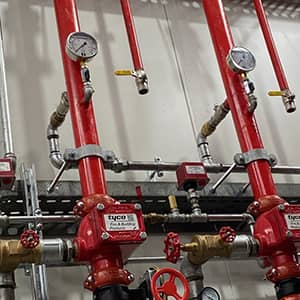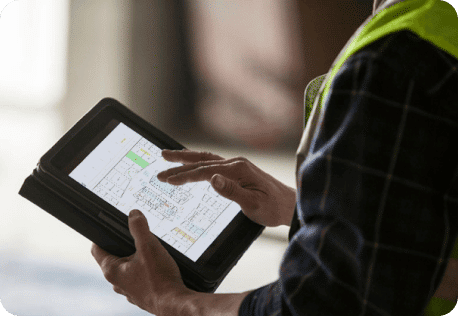Specialising in the installation of permanent anchor points, walkways, platforms, roof ladders and rigid rail for height access and safety purposes, Anchored Height Safety is trusted to deliver safety solutions for a range of commercial and public infrastructure projects.
Certified roof anchors and fall arrest equipment protect workers from serious injury and safeguard lives. Anchored Height Safety also offers full design and analysis, roof anchor testing and audits of height safety equipment. The Melbourne-based business is a key contributor in the design of construction projects with firms such as Alimak, Texco and Qanstruct, with Bluebeam a critical tool in delivering safety outcomes.
Mark Anderson, the company’s director, moved into the height safety field after a successful 20-year career in automotive safety development across the globe at Bosch. A certified PMP Project Manager and mechanical engineer, Anderson also has extensive experience in software development.
Before adopting Bluebeam, Anchored Height Safety faced several challenges in its documentation and workflow processes, relying on manual methods and outdated software, which resulted in time-consuming tasks, inadequate documentation quality and limited collaboration capabilities.
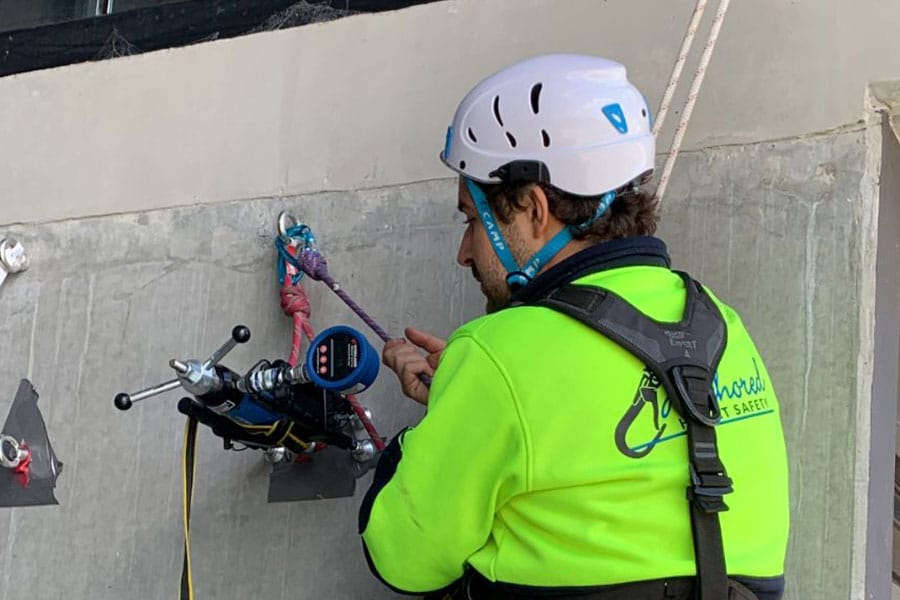
How COVID-19 fast-tracked a business pivot
In 2020, days after taking over the reins of his new business, Anderson faced the ultimate business challenge: the first of Victoria’s COVID-19 lockdowns.
While other business owners may have toppled off the tightrope, the former project manager and mechanical engineer instead harnessed the disruption as an opportunity.
‘The business was forever changed because of that month in March 2020,’ Anderson said.
‘We had to pivot the focus of the business a couple of times over the COVID lockdowns in Victoria—firstly on construction and then into maintenance activities—such as façade maintenance and window cleaning.
‘Through having to change the mix of work, we learned a lot about the business and its processes,’ Anderson said. ‘In any environment—including COVID—it’s absolutely critical to make sure that the anchor points, roof access points and ladders are all inspected to ensure they are in suitable condition to be able to be used.’
‘Through the reporting capability that Bluebeam offers, we are able to present and detail the value that we are delivering to our clients—in what we are doing, why it is important and the resulting outcome.’
Mark Anderson
Managing Director
Anchored Height Safety
‘There were still challenges around that—in Victoria there was a stigma around entering people’s properties which we needed to access up to a roof,’ Anderson added.
Throughout the initial impact, Anderson and his team were quick to realise any successful business refocus required an agile, responsive and accurate document management and collaboration platform.
At the time, management of all recertifications were undertaken on paper—people were given packs of paper. The team was manually creating detailed drawings of buildings and then scanning and printing, meaning reams of paper trails and document versions each and every month.
‘It was a challenge—trying to interpret other people’s notes and drawings, trying to make sure we were using the most recent versions of drawings and managing a paper-based system of updates,’ Anderson said.
‘COVID and the shutdowns didn’t just shift our refocusing on our business offerings … it forced us to do a deep dive into how we were delivering and what we could do to improve our business.’
Crossing the digital divide
Anchored Heights Safety implemented Bluebeam in July 2022.
Anderson’s significant history in software development, as well as his experience in software engineering and knowledge of data security and management, influenced his interest in Bluebeam, particularly the Studio feature for tracking and managing drawings.
Before Bluebeam, the company was using AroFlo® for job management and Adobe InDesign™ for markup and design purposes. InDesign provided functionality for creating visually appealing layouts, but it lacked features such as counts, advanced markup capabilities and direct editing of PDF documents.
‘We found Bluebeam’s ability to quickly create visually appealing and functional markups impressive and we encourage other businesses to harness the power of this software,’ Anderson said.
An integrated and staged approach to implementation focused on education and developing mentors and champions.
‘The philosophy of the business is to empower the staff members who will be the primary users of the software to be developed and positioned in advance to provide support to others,’ Anderson said.
Anchored Height Safety delivered Bluebeam in three stages:
Stage 1
Anchored Height Safety first introduced Bluebeam across the office and sales teams, focusing on migrating from InDesign to Bluebeam and building familiarity with the software. This approach offered the time and space for initial users to explore the functionality of Bluebeam Studio and to identify and harness opportunities. The office team then had the foundational knowledge to become the primary support for answering questions and addressing issues.
Stage 2
Two tech-savvy installers were identified as key users and received training to help roll out Bluebeam to the rest of the staff in the field. As the rollout progressed, the business then focused on the reporting aspect of Bluebeam and hired a staff member dedicated to creating reports and setting up documents for field use.
These roles were responsible for ensuring bidirectional traceability—linking the drawings in Bluebeam to AroFlo, using unique identifiers. Their remit was also to prepare for quality assurance (QS) requirements and implement processes that consider data traceability, redundancies and source management.
Stage 3
To ensure use of Bluebeam is optimised and refined, the business has invested in a reporting manager who also champions the development and refining of templates and workflows to optimise the business operations. The business has now integrated Bluebeam and AroFlo seamlessly into standard processes to avoid duplications and facilitate audits, ensuring biodirectional traceability.
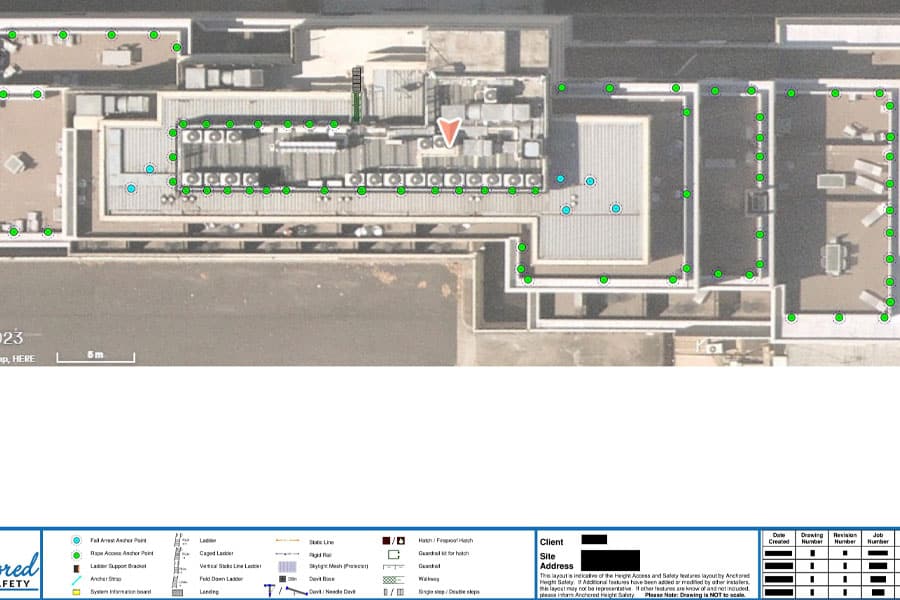
The Bluebeam Difference
Bluebeam has delivered to the business an opportunity to reduce duplication, increase accuracy and fast-track important work – building customer trust.
The software tools have also enhanced the professionalism of the organisation: ‘With the customised Bluebeam templates, our quotations offer a clear representation of different components and inspections. We add in icons and visual elements and provide a marked-up document that transparently explains various aspects of the project. The result is a quotation that is visually professional, easy to understand and clearly articulates what we offer to deliver’, Anderson said.
‘For quantity surveys to determine the cost of a specific number of anchor points we use our job management system AroFlo. For feature management and markup, including quantities, we use Bluebeam and then manually transfer this data to AroFlo. We haven’t integrated Bluebeam and AroFlo as this stage offers an opportunity for a touchpoint between the markup and the quote preparation to audit quantities and ensure the particularities of each installation are considered.’
After completing the quote, the unflattened markup is used in Bluebeam Studio, both on the laptop and the app in the field. In the field, the markup in Bluebeam Studio is adjusted to tailor the project, such as minor adjustments of anchor positions and adding photos to each height safety feature.
Each drawing has a unique identifier and each drawing links back to the job number and location – which reduces errors – eliminating the risk of redundant and expired drawings being used.
Anchored Height Safety uses Bluebeam Review on iPad while working in the field. First, installers are required to refer to AroFlo to determine the location and specific instructions for each project before using Bluebeam. The field staff take photos of the installation or recertification, including close-ups and contextual shots, which are uploaded and checked back in.
In the office, an installation or certification report is created using the photos and other data. This data enables the generation of a report that includes customised features, such as failure modes and rectification processes. The report is sent to the client, and any rectification work is scheduled based on the generated report.
Agile and safe
With Anchored Height Safety being silver members of the Working at Heights Association—the peak industry body for the Height Safety industry—the company is firmly focused on promoting best practices in safety for the construction industry.
‘In an industry focused on safety, low-quality documentation can lead to mistakes, potential safety risks and increased costs,’ Anderson said. ‘We also knew that although we work in an unregulated industry, businesses that prioritise quality documentation have a competitive advantage and better growth potential. Through implementing Bluebeam and improving documentation quality, we knew that the business would be positioned as an industry leader and able to attract more clients.’
Since the implementation of Bluebeam, Anchored Height Safety has capitalised on the ability to develop high-quality documentation for clients, offering advanced levels scaling ability and detail.
‘Being able to see the detail at an individual asset level has improved the integrity of the data that we are developing and managing to the point that we sometimes know people’s buildings a lot better than they do. Bluebeam offers a method through its reporting functionality to give clients a detailed view of what is on their roof.’
Mark Anderson
Managing Director
Anchored Height Safety
Working on-site, team members are able to complete markups directly into the same tool that delivers the reporting, reducing double handling and saving time. The results are then quality-checked remotely in the office through Bluebeam Studio.
‘Being able to record a high level of detail means we are also now able to offer a timescale to our reports—a year-on-year comparison of the building, meaning we are able to track the pace of asset degradation and ensure maintenance and repairs are able to respond accordingly,’ Anderson said.
‘Through the improvement in quality, we consider that we are not only saving time and money on revisions; we are also better positioned to grow the business. Having Bluebeam as part of our toolkit also means we are ready to partner with other construction businesses who also use Bluebeam.’
‘Moving to Bluebeam, being able to scale things and measure off it has been brilliant,’ Anderson continued. ‘Some of the buildings are very complex. At the same time, our paper consumption has gone down—we used to go through a ream of A3 each week—now I can’t remember the last time we put a ream in the printer.’
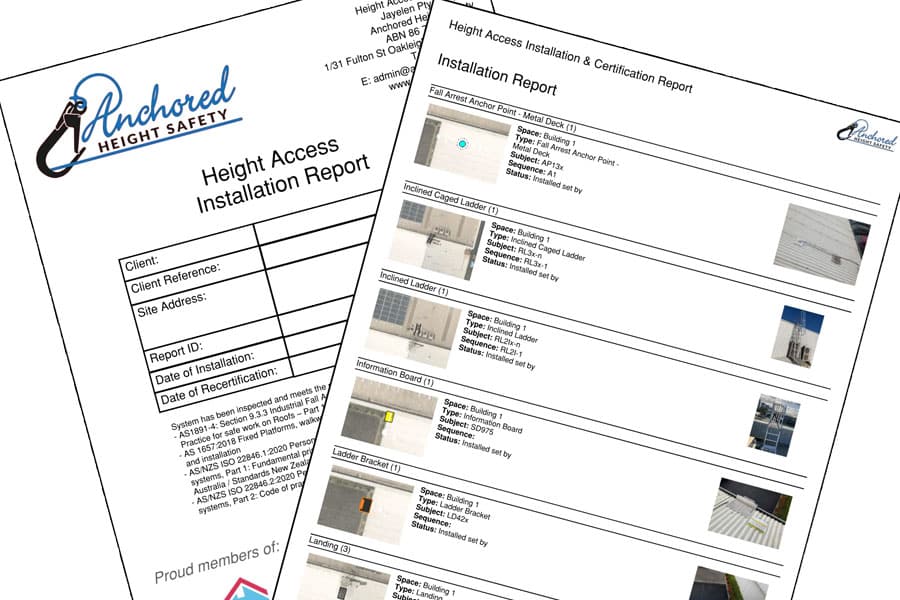
Looking towards the future
While the pandemic-induced pivot enabled the business to realign its focus and refine its systems, it also offered the opportunity for Anderson to fast-track his thinking about embedding solutions to ensure the sustainable growth of the business.
Anchored Height Safety is also delivering projects in regional Victoria, Adelaide and Queensland and partnering with other safety companies to undertake a range of certification projects across Australia.
‘Our immediate focus is on supplying value to clients and enabling them to make good decisions,’ Anderson said. ‘As part of this, we are also looking at continuous improvement and innovation and are committed to supporting the height safety industry to grow and continue its focus on helping projects ensure their approach is appropriate, safe and compliant for t people accessing and working at heights.’
* AroFlo is a trademark of AroFlo Innovations Pty Ltd.
* Adobe InDesign is a trademark of Adobe.

